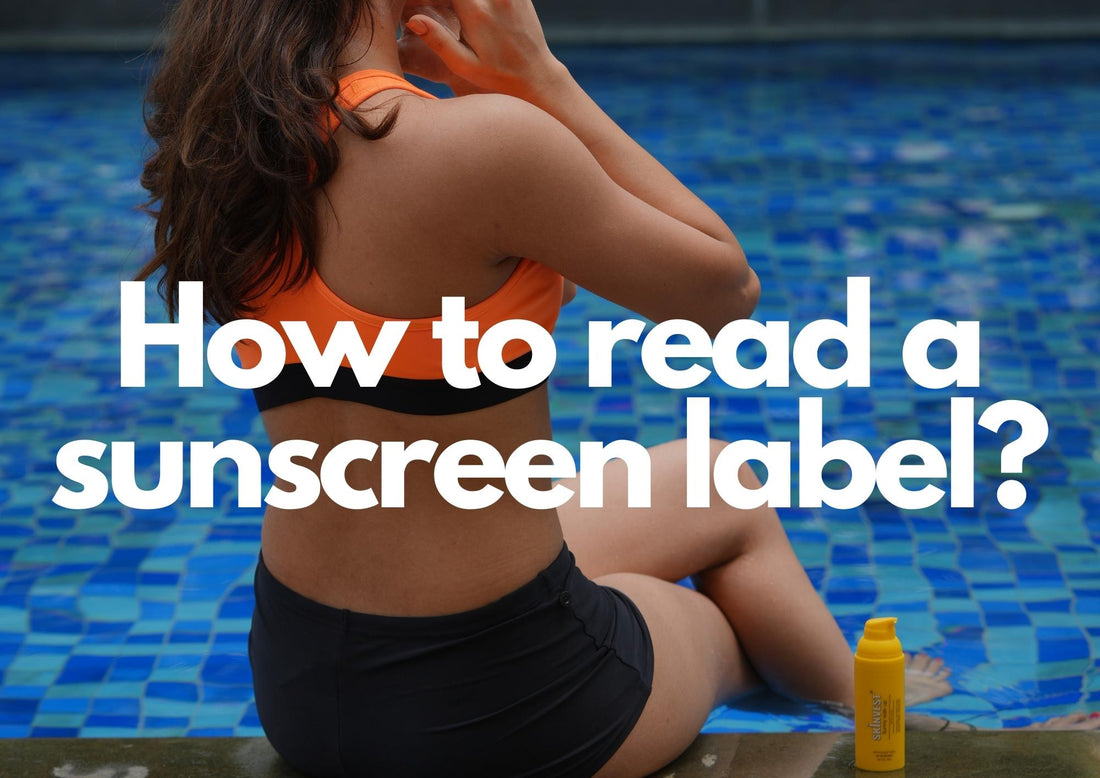
Most of us aren’t aware what is the meaning of the sunscreen terms that are slapped on a typical sunscreen tube. We tend to follow the herd and pick the sunscreen that might have worked for someone whom we follow or someone we know. But it’s time you decide for yourself and the first step is understanding the simple, most basic terms that are used on the sunscreen label. Let’s get right at it!
1.What is the meaning of the terms used on the sunscreen label?
These are just some of the terms that you will commonly find on the sunscreen and which can help you make a decision:
- SPF: SPF means ‘Sun protection factor’ that shows how efficient the sunscreen is in blocking UVB rays. It’s not us, but the FDA who says so. SPF has specific numbers written ahead of it and we are going to talk about what that means. When the SPF is 35 and let’s say your skin burns in 5 minutes then it means the sunscreen will offer protection from UVB rays for approximately 175 minutes. Simply multiply the SPF factor with the number of minutes you can stand without burning. One must always aim for higher SPF if you are outdoors. Here’s how much UVB rays are blocked as the SPF changes-
- Active ingredients: Read out the ingredients and that is how you can validate if it is a physical/mineral or a chemical sunscreen. Some of the physical sunscreens may label themselves as mineral sunscreen like how we have and it means the same. Physical filters that you might find on the ingredient list as Titanium oxide, Zinc oxide, etc. If you find filters such as Avobenzone. Oxybenzone, Octisalate, Homosalate, etc then it is a chemical sunscreen. If you find a mix of both these types of filters then it is a hybrid sunscreen.
In case, you’re wondering what is better- Physical or Chemical sunscreen? We have the answer here.
- PA: PA is a protection grade rating system that measures the amount of UVA rays that are blocked. UVA rays are the ones that are majorly responsible for giving you wrinkles, fine lines, cancer and all the funk that you don’t need in your life. PA ratings are shown in plus signs that are correlated to the results of Japan’s Persistent Pigment Darkening(PPD). This is not a confirmative test but the results are derived from the testing group’s collective response. The higher the PPD, the more the plus signs on your sunscreen and the higher the protection from UVA rays-
- Broad-spectrum: Broad-spectrum measures overall protection from UVA and UVB rays. This is pretty much similar to the PA rating and before you ask what is the difference then it is just about the countries. In American and European countries, you might find a Broad-spectrum on the labels more often than the PA rating which is famous in Asian countries. Our sunscreen Sunny Side Up also mentions a PA rating. It has PA +++ and SPF 35 so we’re very much matching the standards you need in sunscreen while you are out and about. Also, did we tell you that despite being a physical sunscreen, Sunny Side up feels extremely lightweight and leaves no white cast? Yep, see you at the checkout!
-
Bootstar: So far, we have understood that different terms signify protection from UVA and UVB rays. Bootstar rating is a comparative rating that compares the UVB blocking factor with UVA blocking factor in a sunscreen. The more it matches, the more the stars sunscreen will be given. Here’s how the maths go just in case you’re nerding out on sunscreen as we are-
- 3 stars: 60-80% of UVA rays protection as UVB rays protection
- 4 stars: 80-90% of UVA rays protection as UVB rays protection
- 5 stars: 90-100% of UVA rays protection as UVB rays protection
2.Keynotes
Sunscreen labels are easy to understand if you know the meaning of SPF, PA rating, Broad-spectrum, Bootstar, Physical, Mineral, and Chemical sunscreen. SPF measures UVB rays protection and Broad-spectrum, PA rating, Bootstar focuses on UVA rays protection. PA rating seems to be one of the best bets to trust in blocking UVA rays. If you’re indoors then you can apply a lower SPF to protect your skin from the screen rays. Just know that ‘No SPF’ is never the answer to healthy and flawless skin.
Written by Divya Salvi


